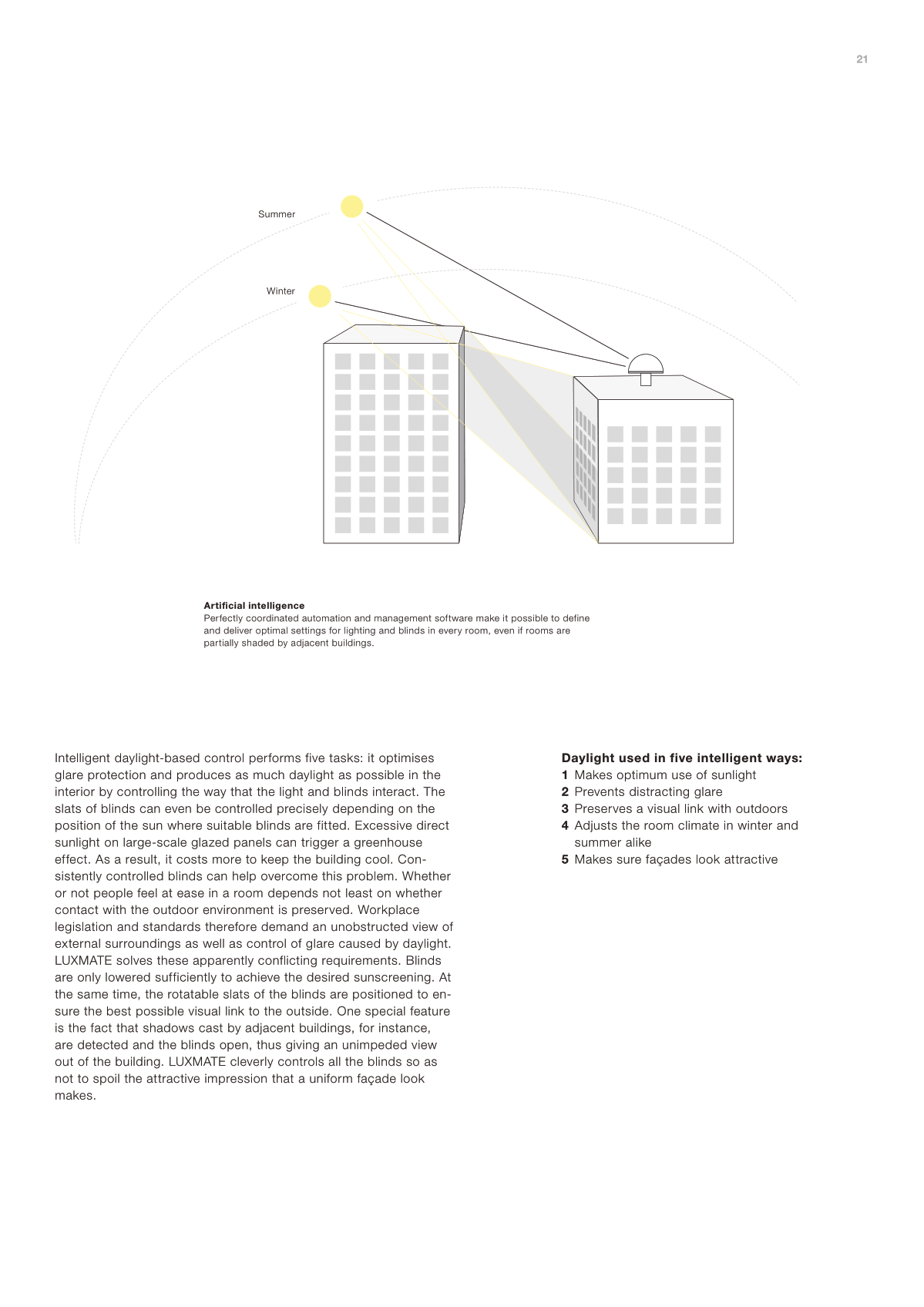21
Intelligent daylight-based control performs five tasks: it optimises
glare protection and produces as much daylight as possible in the
interior by controlling the way that the light and blinds interact. The
slats of blinds can even be controlled precisely depending on the
position of the sun where suitable blinds are fitted. Excessive direct
sunlight on large-scale glazed panels can trigger a greenhouse
effect. As a result, it costs more to keep the building cool. Con-
sistently controlled blinds can help overcome this problem. Whether
or not people feel at ease in a room depends not least on whether
contact with the outdoor environment is preserved. Workplace
legislation and standards therefore demand an unobstructed view of
external surroundings as well as control of glare caused by daylight.
LUXMATE solves these apparently conflicting requirements. Blinds
are only lowered sufficiently to achieve the desired sunscreening. At
the same time, the rotatable slats of the blinds are positioned to en-
sure the best possible visual link to the outside. One special feature
is the fact that shadows cast by adjacent buildings, for instance,
are detected and the blinds open, thus giving an unimpeded view
out of the building. LUXMATE cleverly controls all the blinds so as
not to spoil the attractive impression that a uniform façade look
makes.
Summer
Winter
Artifi cial intelligence
Perfectly coordinated automation and management software make it possible to define
and deliver optimal settings for lighting and blinds in every room, even if rooms are
partially shaded by adjacent buildings.
Daylight used in five intelligent ways:
1 Makes optimum use of sunlight
2 Prevents distracting glare
3 Preserves a visual link with outdoors
4 Adjusts the room climate in winter and
summer alike
5 Makes sure façades look attractive


